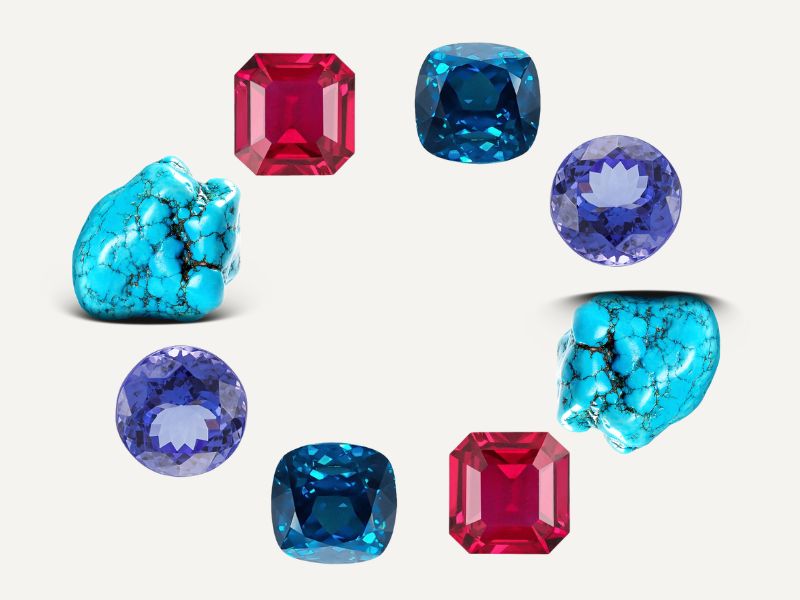
December’s Gemstones: A Journey Through History and Tradition
Share
According to a study by George Kunz (America’s first gemologist and Vice President of Tiffany & Co.), published in 1893, 5 out of 7 cultures he analyzed that included the concept of birthstones unanimously considered ruby as December’s gemstone. Only in Poland and Russia did turquoise, or turquoise and chrysoprase, respectively, take this place.
In biblical translations (the origin of the European tradition of associating stones with months), December was associated with beryl or chrysoprase.
In 1912, the Jewelers of America Association, at their convention in Kansas, formalized the modern birthstone list. One of the notable changes from centuries-old traditions was moving ruby from December to July. Turquoise replaced ruby as December’s gemstone, based on the argument that a warmer-colored stone better suited July, while the paler turquoise seemed more appropriate for a winter month when the sun’s warmth was less intense. However, the reverse logic also holds: in winter, people seek warmth, while in summer, cooler tones are more desirable. This rearrangement mirrors the order found in the Polish list, likely popular in 18th-century Europe thanks to Maria Leszczyńska, Queen of France and wife of Louis XV.
Additionally, lapis lazuli was introduced as a second December stone in 1912. However, in later revisions of the list, it was replaced by blue zircon. In 2002, blue topaz and tanzanite were added as modern alternatives. The inclusion of tanzanite was heavily influenced by Tiffany & Co., which invested significantly in marketing this gemstone discovered only in the late 20th century.
As you can see, December offers a wealth of gemstone options. However, if you value centuries-old traditions and the mystical connection of a stone with your birth month, ruby should be your top choice.

Olga Bachurina,
Co-Founder of Venus in Libra,
Certified by GIA & Gübelin Academy



